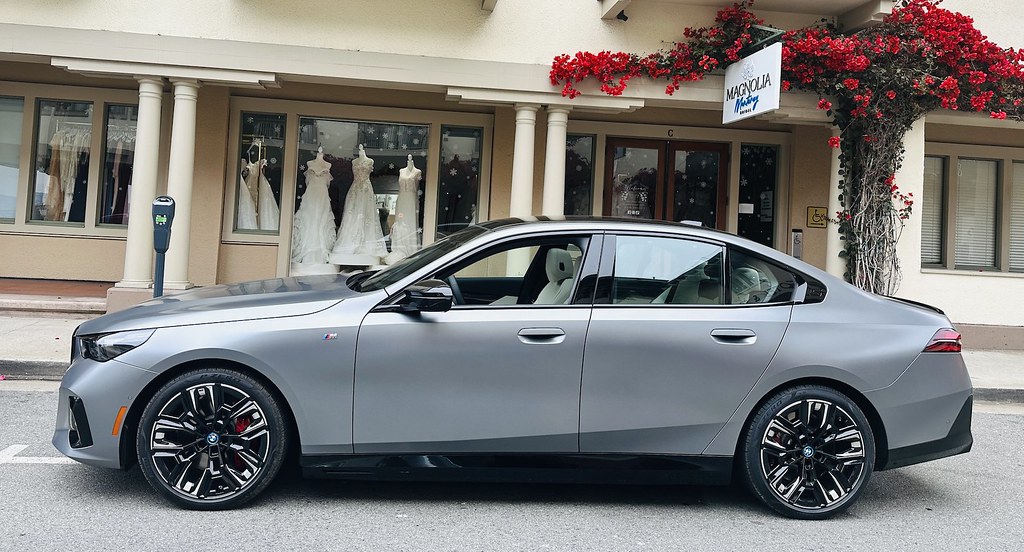
In 2024, the used car market is experiencing a remarkable transformation as prices continue to drop significantly, offering much-needed relief to buyers who have felt the sting of soaring costs for years. According to the latest insights from Black Book, the weakening prices and trade-in values are largely a response to high APRs and other market dynamics discouraging potential buyers. This summer marked the most substantial decline in wholesale used car prices since the pandemic, and the downward trend seems poised to persist into the fall, with wholesale prices having dipped by one percent just this past month.
1. **Softening Prices**: Over the past few months, used car prices at wholesale markets have been steadily declining, providing potential buyers with a glimmer of hope. The trend is unmistakable, as each passing week sees further softening of prices. This could mean that buyers are on the brink of enjoying substantial price relief if this pattern persists. However, the challenge remains with high used car loan rates, which are still hovering above 14% APR.

While falling prices are a boon for buyers, the consistently high-interest rates on used car loans pose a major challenge, with the average rate hovering above 14% APR, which keeps many consumers on the sidelines. Additionally, enticing manufacturer incentives on new vehicles, including zero percent APR options, are prompting prospective buyers to weigh new cars against their used counterparts, further complicating the decision-making process.

As used car prices decline, trade-in values are also taking a hit, creating difficulties for sellers looking to offload their vehicles. This situation can be frustrating for those wanting to sell or trade in, but it simultaneously opens doors for buyers searching for more favorable deals in the used car market. Regularly checking your vehicle’s trade-in value and exploring private sale options can significantly help navigate these challenges and enhance your selling strategy.

4. **Increased Inventory**: The influx of 2022 and 2024 models has stabilized the used vehicle inventory, making more certified pre-owned vehicles available. This has helped mitigate the late model year shortage that previously put pressure on pricing. Used car inventories are stabilizing, while demand for certified pre-owned vehicles is rising, thanks to automakers expanding the qualifications for certification.

5. **New vs. Used Car Prices**: Despite the drop in used car prices, the average price remains above historical norms, standing at $25,328. However, new car prices have also seen reductions, further narrowing the gap between new and used car prices. This dynamic encourages potential buyers to weigh the options between purchasing a new or used vehicle.

The automotive landscape is currently experiencing a wave of manufacturer incentives, which has led the average list price of used vehicles to drop to $28,200. These incentives are not only making new cars more appealing but are also increasing the demand for them, thereby placing additional pressure on the used car market. With inventory levels climbing and prices continuing to fall, conditions are becoming increasingly advantageous for buyers seeking bargains.

As we move into the latter half of 2024, economic indicators suggest that this is a buyer’s market, fueled by cautious consumer behavior that is driving demand for budget-friendly options. In response, dealerships are adapting with competitive pricing and special incentives designed to attract wary buyers, making it an opportune time for those looking for bargains.

Current market trends suggest that used car prices are likely to keep declining in the months ahead, making it easier for consumers to find accessible deals. However, the persistent high-interest rates still pose a significant hurdle that can shape buying decisions. As the year unfolds, it is crucial for informed buyers to monitor market trends closely, allowing them to seize opportunities for the best possible deals.

Staying educated is essential in this evolving market landscape. Utilize online resources like CarEdge Sell, Kelley Blue Book, and Edmunds to keep track of your car’s trade-in value and stay abreast of the latest trends. These tools can empower you with the information necessary to negotiate effectively and make informed choices, ultimately enabling you to navigate the used car market with confidence.

For those aiming to get the most value from their vehicle, consider opting for a private sale instead of a dealership trade-in. Although this route may involve more work in terms of advertising, showing, and negotiating with potential buyers, it can often yield a higher selling price compared to a trade-in offer. Be prepared for the extra effort, but keep in mind that the financial rewards can be worth it.

11. **Enhance Vehicle Appeal**: Ensuring your car is in the best possible condition before selling can make a substantial difference. A thorough cleaning, minor repairs, and up-to-date service records can increase your vehicle’s attractiveness to potential buyers. Investing in these small improvements can yield higher offers from both private buyers and dealerships.
12. **Negotiate with Confidence**: When trading in or selling your car, don’t shy away from negotiation. Get quotes from multiple dealerships and use your research to leverage better deals. Familiarize yourself with negotiation tactics, perhaps through resources like CarEdge’s Deal School 2024, to enhance your bargaining power and facilitate a successful sale.
13. **Consider Professional Assistance**: Using a car buying service can simplify the process significantly. These services often employ professional concierges skilled in obtaining favorable deals and negotiating trade-in values. They can handle the complexities of the transaction, leaving you stress-free and potentially with a better deal than you could achieve independently.

Timing plays a vital role in the car buying and selling process. Be mindful of seasonal trends, current market conditions, and upcoming vehicle releases when making your decision. These elements can significantly influence pricing and availability, helping you pinpoint the best times to buy or sell your vehicle.

15. **Evaluate Financing Options**: As interest rates remain a critical concern, explore various financing options before committing. Compare offers from different lenders, including credit unions and banks, to secure the best possible rates. Consider manufacturer incentives, which might offer low or zero percent APR deals that could make purchasing a new vehicle more attractive than a used one.

In this dynamic market marked by fluctuating prices and shifting trends, staying informed and strategically prepared is key. By approaching the used car market with a well-thought-out strategy and considering all options available to you, you can confidently navigate through the process, securing a vehicle that aligns with your needs and budget. The journey may have its challenges, but with the right mindset and tools, you’ll be in the driver’s seat of a fantastic deal.
Related posts:
The Used Car Market Is Collapsing in 2024 – What Buyers and Sellers Need to Know
Used car prices continue to drop as demand for vehicles shoots up
When Will New Car Prices Drop?








